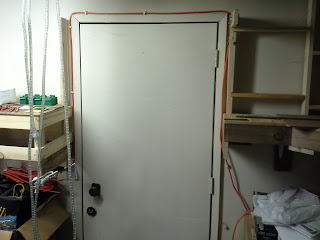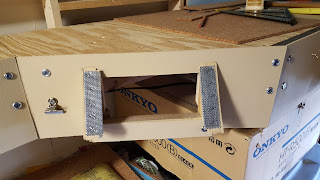Painted Creek Bed
After the glue dried, I used a steak knife to cut the contours of the wall and mound to my desired shape. The type of styrofoam pieces I had on hand was the bead board type (not ideal for model railroading). This type makes a huge mess once the cutting and shaping begins. Fortunately, it does clean up pretty easy with a Shop Vac.
Styrofoam Shapes Glued in Place
The next step was for me to cut strips of Plaster Cloth from Woodland Scenics. The strips were dipped in water and placed over the styrofoam. These strips will harden and form a relatively hard shell that still weighs very little.
Woodland Scenics Plaster Cloth
Plaster Cloth Being Added to the Styrofoam
Completion of Plaster Shell
I am pleased with the results of this project so far. I still have a lot of work to do in order to complete the creek scene. The next portion will consist of me making plaster rocks using Woodland Scenics rock molds and attaching them to the canyon wall.





















































